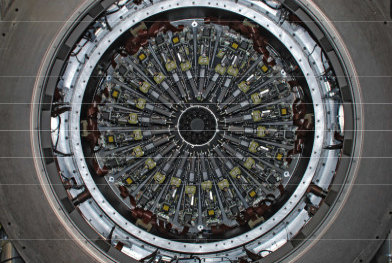
The KMOS instrument
Observations indicate that all massive galaxies host a supermassive black hole in their centre. These black holes go through a phase of rapid growth (Active Galactic Nuclei; AGN) during which they inject considerably energy into their host galaxies and ultimately destroy or remove star-forming material (gas) via outflows. An outstanding question in modern astronomy is how can growing black holes be so critical in the formation and evolution of their host galaxy when they are billion times more compact than the galaxies in which they reside in? To answer this question we need to study the outflows produced by these growing black holes and in particular the warm (~104 K) ionised outflows.
A lot of work has already been done in this area, regarding galaxies at low redshifts (i.e. at late cosmic epochs). However, at high redshifts (~1-3; i.e. early cosmic epochs) to study these outflows we need to shift to near-infrared wavelengths, due to the Doppler effect. These high redshift observations are essential since the AGN activity and star formation are at their peak during early epochs and therefore outflows may be most prevalent. Yet, until recently, lack of instrumentation didn’t allow us to obtain large samples of such near-infrared observations.
This is where KMOS (K-band Multi-Object Spectrograph) comes to rescue. KMOS is an instrument that has been in operation at the VLT since November 2012 and is ideally suited to rapidly build up large samples of high-redshift AGN host galaxies. KASHz (KMOS AGN Survey at High Redshift) is a survey that has been designed to use the unique capabilities of KMOS to provide insight into the feeding and feedback processes occurring in the host galaxies of high-redshift AGN. The first results from KASHz showed a remarkable similarity between the outflows at both early and late epochs. These outflows are also more prevalent in the past. Some evidence that the prevalence of outflows is increased in the host galaxies of the most rapidly accreting black holes could explain this finding.
However, KASHz is an ongoing project. As the observations continue and larger samples are being built up, scientists will be able to answer a wide array of questions: How do the morphologies and energetics of the outflows compare to host galaxy and AGN properties and what physical processes drive these outflows? These are key questions to address in order to constrain models of galaxy formation.
Publication: Harrison et al. 2016
